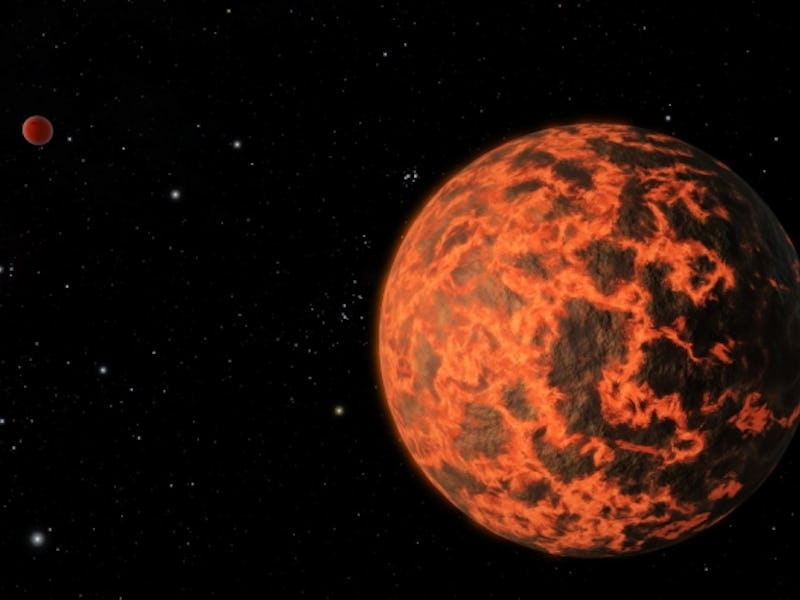A new planet discovery has astronomers confused
Is it a large, unusually dense planet or the remains of a gas giant?

Since its launch two years ago, NASA's Transiting Exoplanet Survey Satellite (TESS) has scoured the skies to search for strange alien worlds spread out in different parts of the universe.
Throughout its unusual encounters, this recent discovery ranks pretty high in the list of planetary mysteries. TOI-849 b is not only the most massive Neptune-sized planet discovered to date but it also has a density similar to that of Earth's, which made astronomers wonder whether it is a planet or the remanent core of a much more massive Jupiter-sized planet.
The discovery was detailed in a study published this week in the journal Nature, and provides astronomers with new clues about the formation of planets in the universe.
TESS has been on the hunt for strange worlds since it first launched in 2018.
The strange exoplanet was spotted in TESS data from September and October 2018 as it orbited around a star located about 750 light-years away, marking the 749th object of interest discovered by TESS.
What part of the Covid-19 pandemic do you think causes the most confusion? We want to know. Take the Inverse reader survey
TOI-849 b is around 3.5 times larger than the Earth and about 40 times more massive. However, it appears to be just as dense as our home planet.
Although the exoplanet is classified as a Neptune-sized planet, meaning it is of similar size to Neptune, it is more than twice as massive as Neptune.
Neptune is the fourth-largest planet in the Solar System, and planets of this size tend to have much less density than rocky planets such as Earth or Venus. However, TOI-849 b seems to defy all odds since its density suggests that it's a rocky planet but it is much larger in size than any rocky planet.
Planets that grow to about 40 times the mass of Earth are expected to keep growing until they end up becoming a gas giant like Jupiter, the largest planet of the Solar System.
“We’re really puzzled about how this planet formed,” Chelsea Huang, a postdoc in MIT’s Kavli Institute for Astrophysics and Space Research, and a member of the TESS science team, said in a statement. " Imagine if you had a planet with Earth’s average density, built up to 40 times the Earth’s mass. It's quite crazy to think what’s happening at the center of a planet with that kind of pressure.”
One theory is that TOI-849 b could be a Chthonian planet.
Chthonian planets have never been observed before, but they are rather a hypothetical class of objects that is the remaining core of a gas giant planet that has been stripped away of its atmosphere and outer layers.
The study suggests that TOI-849 b started off as a gas giant like Jupiter or Saturn, and its gassy envelope was slowly stripped away from the radiation of its host star since the planet orbits very close to it. In fact, TOI-849 b completes one orbit around its star in about 18 hours, which exposes it to about 2,000 times the solar radiation that Earth receives from the Sun.
The discovery of the exoplanet, and further studies looking into its composition, could provide astronomers with crucial information on how gas giant planets like Jupiter form.
“If this scenario is true, TOI-849 b is the only remnant planet core, and the largest gas giant core known to exist,” Huang said. “This is something that gets scientists really excited because previous theories can’t explain this planet.”